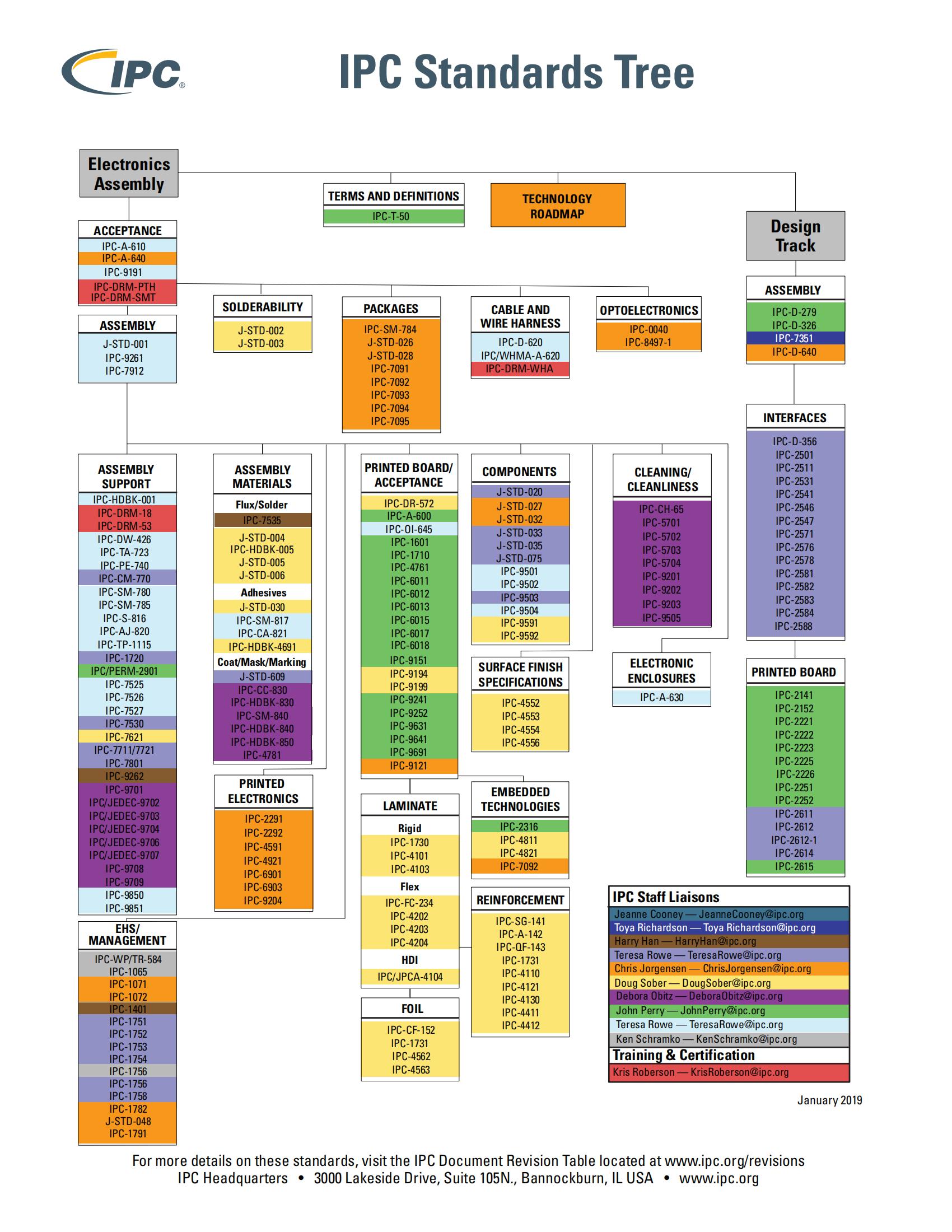
Support Team
Feedback:
support@nextpcb.comPrinted circuit boards are an essential element of many electronic devices because they improve their performance. Therefore, PCB manufacturers understand the importance of maintaining PCB quality at all stages of manufacturing. Most manufacturers follow IPC standards for PCB manufacturing. These standards help them maintain PCB quality during the design, test, and inspection phases.
The Institute for Interconnecting and Packaging Electronic Circuits(IPC) is a trade organization that standardizes requirements for the manufacture and assembly of printed circuit boards. The organization was founded in 1957 as the Institute of Printed Circuit and the Institute for the Interconnection and Packaging of Electronic Circuits. Since 1999. Today the organization is now formally known as IPC, which publishes standards for the acceptability of the printed circuit board industry. These standards have been accepted worldwide. Currently, IPC has more than 4800 members. These members include companies that specialize in all aspects of PCB manufacturing, from designers to material suppliers to board manufacturers, assembly services and OEMs.

This standards tree shows the classification and specifications needed for manufacturing aspects such as:
Design: The IPC-2221 series are generic standards for the planning of PCBs. This covers everything from board flexibility and rigidity to the planning layout, elements lists, material selections, and a number of other further properties.
Manufacturing: The IPC-6012 provides a detailed overview of the performance requirements and qualifications of rigid printed circuit boards. Rigid circuit boards can be designed in a variety of ways, such as single-sided PCBs, active/passive embedded PCBs, metal core PCBs, HDI, etc. All these designs and their performance requirements are broadly classified in this standard.
Inspection: The IPC-A-600 includes standards for the principles of written boards, like product classification, acceptance criteria, conductor breadth and spacing, stuff material criteria, and more. These standards may be peer-to-peer training-related, testing-related, etc.
Performance: IPC-6012B provides performance needs encompassing the structural integrity, solderability, and area needs for rigid PCBs.
Assembly: IPC-A-610J (2024) is the "Acceptability of Electronic Assemblies" customary, that outlines specific fastening and mounting criteria.
Cleaning: sure uses of PCBs need the utmost cleanliness. IPC-TM-650-2.3.25.1 covers ways for ionic cleanliness testing for clean boards.
Much more
Keep up on recent revisions by sorting out this IPC standards revision list.
To get specifics on every standard, use this IPC Checklist.
It's tedious to browse through pages of IPC standards, however, they're there permanently reasons, notably for PCB layout styles. The IPC was established in 1957 and at the time was referred to as the Institute of computer circuit. Today the organization is now formally known as IPC, which publishes standards for the acceptability of the printed circuit board industry. These standards have been accepted worldwide. Currently, IPC has more than 4800 members. These members include companies that specialize in all aspects of PCB manufacturing, from designers to material suppliers to board manufacturers, assembly services and OEMs..
IPC produces and maintains standards that function a typical guideline for PCB style, fabrication, assembly, test, and different areas of concern. For PCB designers, obliging with the relevant IPC standards for PCB layouts will create a distinction during a product's success or failure.
There area unit simply too several variables in PCB style that may have an effect on the dependableness and manufacturability of a board. for instance, designers might intercommunicate estimate for the right pad size for through-hole parts. coming up with while not the steerage of IPC standards may also cause non-conformance of uniformity between designers and makers.
Throughout the times, the IPC has established colorful norms that insure design trustability and manufacturability. For PCB contrivers, the must-have- read IPC standard is the IPC- 2221. The IPC- 2221 is the general standard that covers nearly every aspect of PCB design.
The standard details how electrical considerations similar as PDN machine layouts, captain concurrence, and impedance control should be enforced on a PCB. You 'll also find runners in the standard that concentrate on thermal design considerations for the PCB. The standard explores multiple methods of dissipating heat in PCBs and explains how to apply them in factual designs.
PCB design and manufacturing are thick sides of the same coin. Some sections of the IPC- 2221 helps contrivers insure the PCB is optimized for PCB manufacturing. For illustration, section 9 touches on holes and interconnections, which contain guidance on drill size, land pattern, and captain distance on a PCB.
Meanwhile, the IPC- 2222 is a standard that dives deeper into the conditions for a rigid organic PCB design. This standard goes into detail on factors that enhance the manufacturability of a rigid PCB, including material selection, hole size, interconnects, and mechanical parcels.
The IPC-2221, however, does now no longer cowl suggestions associated with flex PCB layout. If you're operating on one, you'll want to consult the IPC-2223, which solely specializes in flex PCB shape layout. It covers vital layout concerns consisting of pad/thru placement, bend radius, coverlays, and structural specs for flex PCBs.
Still, need help? Contact Us: support@nextpcb.com
Need a PCB or PCBA quote? Quote now